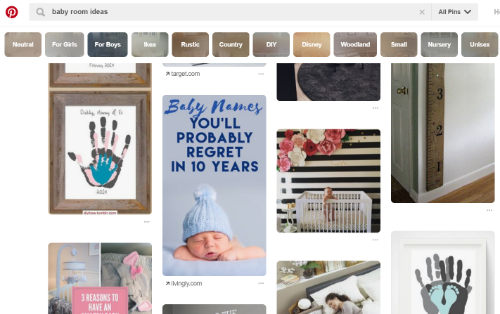Locking down your target market is only half the battle. The next step is uncovering how your audience acts and where to target that audience online. You may have produced some of the best digital content on the web, but it’s all a waste if that content isn’t placed where your target audience spends their time. This stands true for all forms of marketing; the exposure is what really delivers the results you’re seeking.
So if you don’t have time to dig into the data to find where your target market lives online, we’ve got you covered! Our team has researched three audience types so you can uncover not only where to find them, but also, what kind of content they prefer to consume.
If knowing your audience is half the battle, understanding what makes them tick and click is the other half!
Millennials

They are idealistic, optimistic, and concerned with instant gratification as well as humanity’s future wellbeing. They are one of the most complex audiences to understand and to target. This younger generation prefers their content more raw and unfiltered, which allows them to draw their own conclusions from the data. Here are three ways they utilize some of the largest platforms online.
YouTube
To excel at millennial marketing, investing in YouTube is a must. Millennials consume the most content on YouTube with more than 50% visiting the site at least once a day. On YouTube, review and demo videos are one of the highest consumed types of video content, and Millennials often drive its popularity. Many of them flock to product and service reviews in order to make better-informed purchasing decisions. In fact, 85% of Millennials find product demos to be useful and 80% find video content to be useful during their initial research for making a purchasing decision.
The ability to get your brand mentioned or reviewed in a video created by a social influencer or a YouTube user with a large following can boost sales. A Defy Media study found that 63% of Millennials would try a product or brand that’s been recommended by a YouTuber. If you can get your brand mentioned by a social media influencer, you can all but guarantee new leads.
Though Facebook isn’t as popular among Millennials as it once was, it still holds its own, with 41% logging into the site each day. To excel in social media marketing on Facebook, you’ll want to focus on creating video content over long-form posts.
This demographic isn’t always as interested in reading about your brand or your product. They prefer to watch your company’s story unfold live before their eyes. They’re more interested in watching a demo of a product versus a text-based description. For this audience, it’s all about an immersive experience.
Live video is even more popular with Millennials. A study conducted by USB found that 63% of millennials have watched live video online. It’s no surprise that Facebook has invested a vast amount of effort into its live platform as the popularity of the medium continues to rise. The ability to watch and share content in real-time is cutting-edge and interactive. This audience is all about socializing, engaging, and being heard.
Trendy Digital News Sites
Aside from social media, Millennials also spend a lot of their time on other popular, big name sites such as Buzzfeed, Elite Daily, Mashable, and Upworthy. These sites are praised for their pop culture news, viral content, and mobile-friendly formatting. In fact, 50% of Millennials visit Buzzfeed and similar sites, which means millions of users each day!
Millennials use these sites to stay up-to-date with the latest breaking news, pop culture media, recipes, reviews; they even visit for fun content like personality quizzes. These sites are so popular amongst Millennials because they are decentralized and democratized (or easily shareable). Younger generations are all about staying in the loop, but they want to do so without the bias of politics or other factors.
Getting your content posted on one of these sites or having your brand or product mentioned could mean a huge visibility boost.
Young Parents

Parents of all ages, but especially younger parents, are keen on using social platforms, news sites, and parenting forums. The Millennial age groups includes both those who witnessed the transfer from old to new media, as well as those who grew up 100% intertwined in the digital world. In other words, this group is more accustomed to using resources like Google, Facebook, and YouTube to find the answers they need.
Pinterest adds a new dimension to content: pictures and graphics. The site has become popular because of its heavy reliance on graphics-based content, its user-interface, and its personalization features. For parents, it’s one thing to read about designing a nursery or creating DIY invitations for a child’s party. By using Pinterest, parents can enjoy visual cues and graphic-based data that allows their imagination and creativity to come to life.
According to Pinterest, 43 million of their users are planning for a baby. There are more than 900 million parenting Pins on the site and the platform prides itself on being useful for parenthood at all stages: designing nurseries, creating organic baby food at home, traveling with a newborn, getting sleep as a parent, and much more.

Another go-to place for parents in the social media realm is Facebook. This is the ideal environment for asking parenting questions, connecting with experts, finding new products through video reviews and demos, and getting support from parents who are going through similar situations.
A study conducted by Pew Research Center found that 75% of parents turn to social media for parenting information and social support. Both mothers and fathers are likely to use Facebook, with 75% of them logging on at least once a day. About 94% of parents use Facebook to comment, share, or post information that they find helpful, especially content related to family topics.
YouTube
While video content is available on other social networking sites, YouTube stands as the go-to location for parents, especially moms, who are looking to learn about a product before purchasing. Parents are all about safety and satisfaction, especially when buying products for their child. By watching video reviews and vlogs, parents are able to have a holistic understanding of a product, including the pros and cons.
Parents use the video content platform to learn about jogging strollers, cloth diapers, and every topic in between. A study found that 83% of moms between the ages of 18-54 search for answers online and three in five use video content. If your target audience includes moms or curious parents, YouTube is a must use. Find ways to turn your content into DIY or review-based videos to pique interest.
Seniors

While often stereotyped as “not very tech-savvy,” seniors are adopting new technologies across the board. Everything from smartphones to social media is seeing rapid growth. More seniors use social media to stay in touch with family members. Others read online content to stay up-to-date with current news events. While tech adoption has been traditionally slower with this market, data clearly indicates that the tide is turning with seniors and technology.
Senior citizens can often feel isolated. As geography spreads friend and family farther apart, new technologies, smartphones, and social sites have helped bridge this geographical gap for seniors. In 2016 about 35% of seniors were part of a social media network, namely Facebook or LinkedIn. This number has grown from 27% in 2013.
The kicker? Seniors don’t spend as much time on social media as other audiences do. In fact, those over the age of 65 only tend to spend about half an hour on social media and don’t often participate in conversations.
Seniors also use Facebook to find new products, especially those designed to extend and improve life, but they’re far more likely to make in-store purchases than any other group. So, what can you do? Tailoring your promotions on Facebook to promote in-store-only discounts can help drive this target market into your brick-and-mortar locations.
Conservative News Sites
Seniors engage with a variety of digital content, most notably news and weather. Global and local news sites are a one-stop-shop for seniors who want to read up on the latest breaking news, while also proving useful for those who want a weekly weather forecast. These sites allow seniors to stay on top of current events, keeping them connected to the world.
According to a website usage study conducted by Quantcast, almost 38% of seniors visit Conservative 101 and 36.3% visit Freedom Daily. Another study found that 66% of seniors check FoxNews.com, Bloomberg.com, and Weather.com regularly.
While getting your original content on these types of sites may be challenging, consider buying ad space that could be displayed on these types of sites or releasing PR statements that may be picked up by publishers.
Though the use of social media sites by seniors has increased, one line of communication that’s remained popular for years is email. The simplicity of email is a selling point for older consumers.
A study conducted by Nielsen found that almost 89% of seniors check their personal email on a daily basis. Email marketing has been popular for years and senior citizens have caught onto the ease and convenience of this method of communication. When targeting seniors via email, offer email-based promotions tailored to this demographic. Personalizing your email marketing for your audience (like seniors) increases the likelihood of conversion and can reduce purchasing friction.
Better Audience Targeting
Knowing how to target your audience and where to find them is crucial in order to drive results for your marketing campaigns. Need help pinpointing where your audience spends their time? Our content marketing team can help drive your marketing success.
